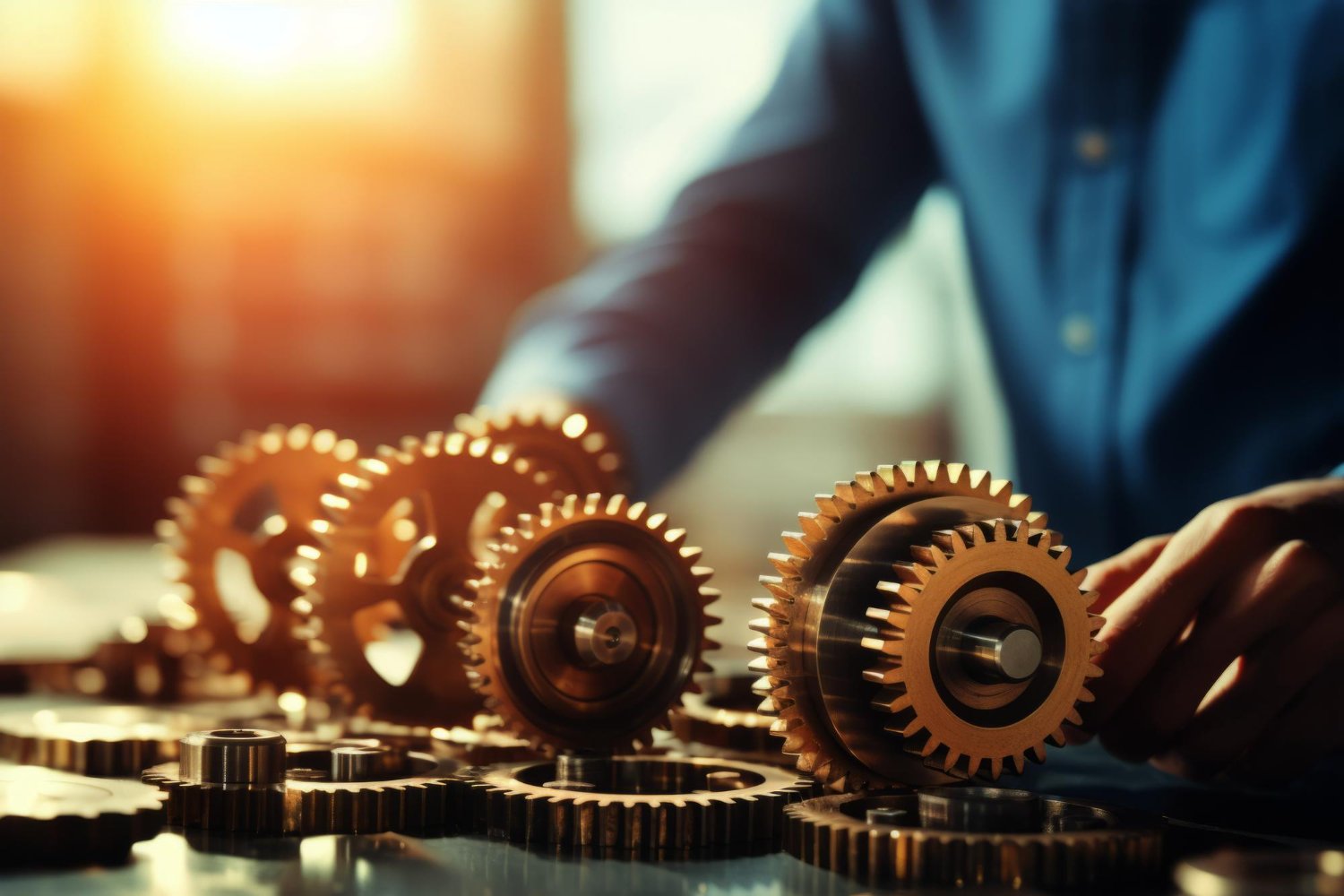
Gears are fundamental and useful components in industrial machinery, acting as the backbone for transmitting motion and power. From traditional mechanical systems to advanced automated equipment, gears have undergone significant advancements to meet the growing demands of modern industry.
In this article we shall be exploring the latest innovations in gear technology, focusing on the materials, manufacturing processes, and design improvements that are transforming industrial machinery.
High-Performance Alloys
One of the most remarkable advancements in gear technology is the development of high-performance alloys. Traditional steel alloys have been the mainstay for gears due to their inevitable strength and durability. However, the introduction of advanced materials for example high-nickel and cobalt-based superalloys has pushed the boundaries of performance of the gears. These materials provide superior wear resistance, high-temperature stability, and exceptional fatigue strength, making them ideal for heavy-duty industrial applications.
Composite Materials
Composite materials are also making their mark in gear technology. By combining materials with different properties, engineers can create gears that offer a balance of strength, lightweight, and corrosion resistance. Carbon fibre composites, for instance, are being used in applications where weight reduction is crucial without compromising on strength. These materials are particularly beneficial in industries like aerospace and automotive, where every gram counts.
Additive Manufacturing (3D Printing)
Additive manufacturing, commonly known as 3D printing, is revolutionizing gear production. This technology allows for the creation of complex geometries that were previously impossible or cost-prohibitive to manufacture using traditional methods. With 3D printing, engineers can design gears with intricate internal structures that optimize weight and performance. Additionally, rapid prototyping with 3D printing significantly reduces development time, allowing for faster iteration and innovation.
Precision Machining
Precision machining techniques, such as CNC (Computer Numerical Control) machining, have significantly improved the accuracy and quality of gears. CNC machines can produce gears with incredibly tight tolerances, ensuring optimal performance and longevity. Moreover, advancements in cutting tool materials and coatings, such as carbide and diamond-like carbon (DLC), have extended tool life and enhanced the surface finish of machined gears.
Optimized Gear Geometry
The design of gear teeth has seen substantial improvements with the help of advanced simulation software. Engineers can now analyze the stress distribution and contact patterns of gear teeth under various load conditions, allowing for the optimization of gear geometry. Innovations such as asymmetric gear teeth, which have different profiles on the driving and coast sides, can improve load distribution and reduce wear, leading to longer-lasting gears.
Noise and Vibration Reduction
Noise and vibration are critical concerns in industrial machinery. Excessive noise can lead to operator fatigue and hearing loss, while vibrations can cause premature wear and failure of machine components. Advanced gear designs, such as helical and herringbone gears, help mitigate these issues by providing smoother and quieter operation. Additionally, the use of vibration-damping materials and precise manufacturing techniques further contribute to noise reduction.
Surface Hardening
Surface hardening techniques, such as carburizing and nitriding, enhance the wear resistance and fatigue strength of gears. Carburizing involves introducing carbon into the surface layer of the gear, followed by quenching and tempering to achieve a hard, wear-resistant surface. Nitriding, on the other hand, introduces nitrogen into the surface, creating a hard nitride layer. These treatments improve the longevity and reliability of gears in demanding industrial environments.
Advanced Coatings
Advanced coatings, such as diamond-like carbon (DLC) and ceramic coatings, provide additional protection against wear and corrosion. DLC coatings offer low friction and high hardness, making them suitable for gears operating under high loads and speeds. Ceramic coatings, with their excellent thermal and chemical stability, are ideal for gears exposed to harsh environments. These coatings extend the service life of gears and reduce maintenance requirements.
Condition Monitoring and Predictive Maintenance
The integration of digital technologies with gear systems has opened up new possibilities for condition monitoring and predictive maintenance. Sensors embedded in gearboxes can continuously monitor parameters such as temperature, vibration, and oil conditions. By analysing this data, predictive maintenance systems can identify potential issues before they lead to catastrophic failures, reducing downtime and maintenance costs.
Digital Twin Technology
Digital twin technology, which creates a virtual replica of a physical gear system, allows engineers to simulate and analyse the performance of gears in real time. This technology enables proactive maintenance, optimised performance, and informed decision-making. By leveraging digital twins, manufacturers can improve the design, operation, and maintenance of gear systems, leading to increased efficiency and reliability.
With this we conclude the article understanding various concepts and learning about the latest advancements in the gear industry.